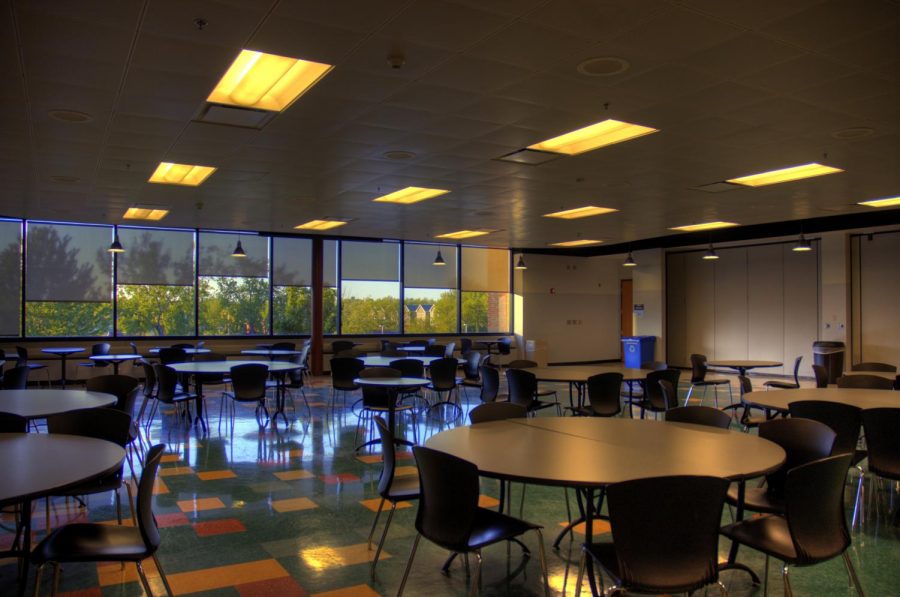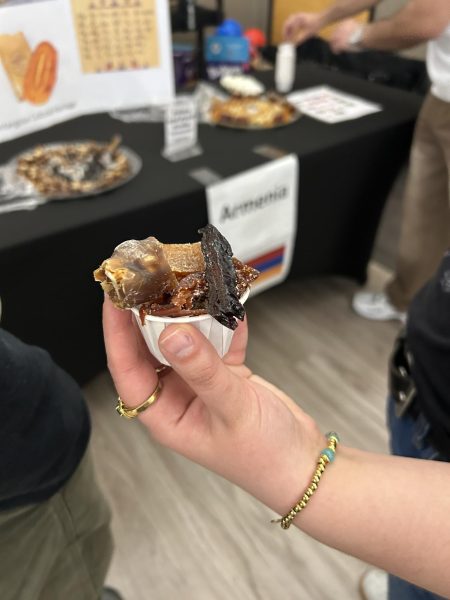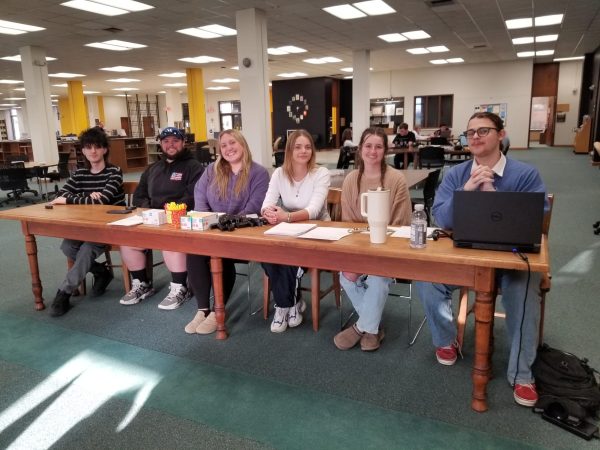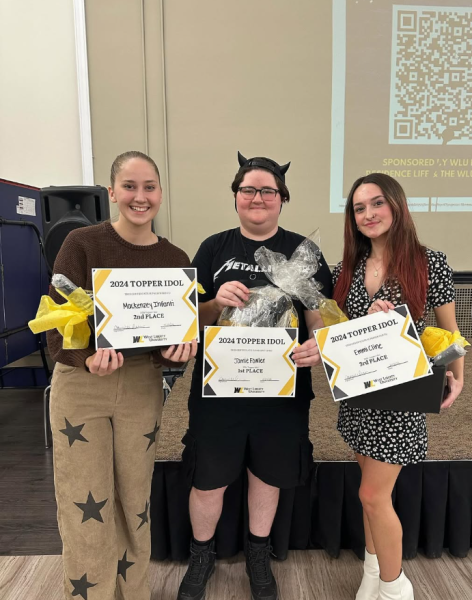How COVID-19 has affected the cafeteria on campus
COVID-19 has changed many aspects of our lives in a short period. From the way we travel to how we communicate and meet with others. But one large thing that COVID-19 has changed is how food service is operated.
For many, this was an abrupt change that has had to be adapted to quickly and carefully. The situation has been no different for West Liberty’s Marketplace Cafeteria. While there are many visible changes in the cafeteria, other changes have been made that are not so visible.
Necol Dunson of Sodexo Food Services, Marketplace, and Catering answered the following questions about the recent changes that have been made to the cafeteria.
Q – How different do you feel this year is from any others?
A – It’s very different. Typically, in the cafeteria or all you care to eat facilities at colleges most of the lines are self-service so the biggest difference for us other than structural differences is the fact that we are having to serve everything. The other thing is we have had to reduce the dining capacity by fifty percent. We have not met full capacity because a lot of the students are taking food to go. Not the majority, but quite a bit more than I expected.
Q – Can you compare the differences in the cafeteria from this year and last year?
A – Now we make your sandwiches to order where before we would give you the meat and cheese on bread and then you would get all your toppings and condiments yourself. The pizza was self-service. At The Grill, the food would be in baskets like they are now but then people would come up and get what they wanted. The biggest things that I think are missed here are the double-sided salad bar and the double-sided dessert bar. We had a lot more real estate for the food before, and now we have to keep it contained so that that is probably the biggest difference. I will tell you that a lot of produce was wasted because people would take more than they wanted but now we custom make the salads so not as much is wasted.
Q – What are some of the biggest changes that have been made?
A – The important things that have changed are we now use a stronger sanitizer that has a broader spectrum of coverage. The frequency of sanitizing touchpoints has been increased. Instead of doing the backs of the chairs and the tables daily, now it is every time somebody gets up. Previously you would change out the tongs that people touch at least every two hours, but now the only person touching them is the person that is serving food. The door handles and railings are also cleaned regularly now while before they might have been wiped down once a day, now, constant rounds are being done.
Q – What are some of the less noticeable changes that have been made due to COVID-19?
A – I would say the least noticeable change is that the complete staffing structure has been reworked. It has been a challenge because people peoples schedules are different than they used to be, the number of hours they worked, jobs that they had, how their day is laid out is completely different due to preparing for things that we did not need to prepare for before. Now somebody has to roll the silverware, somebody has to put the to-go packages together, someone has to put all the condiments in little cups and things like that. So, all these things are happening behind the scenes.
Q – Were any of the safety measures for this year already happening last year?
A – There is a lot of the same. Washing your hands between each task is the same, food safety as far as temperature control and freshness. Things like that are the same. We were still using a sanitizer to wipe everything before but now it’s a stronger sanitizer. You had to have sneeze guards for any self-service area, that’s industry-wide, but we chose to work with maintenance here on campus and design the safest dining option that we could. Now there’s a six-foot wall between us with a small window to hand things out. It’s going to help with the spread of this virus, but also the spread of any virus.
Q – Do you think that some of the new safety measures will be kept in the future?
A – I think so. One positive thing that has come about from these changes that we’ve noticed is we have much more interaction with customers now that we’re serving each one of them rather than just seeing them in passing. But the personal interaction I believe has moved everybody in a positive direction, and we won’t want that to go away. I think this is going to show us some new norms. I think some of these things like how often we sanitize all the touchpoints or the improved chemicals that we’re using on the tables and chairs, all those things I don’t see going away. Why would you go back from these new things and procedures that are in place?
Q – What are some of the changes in the kitchen that have had to be made?
A – The way that we have the cooks and prep cooks separated has changed. Everybody has a larger workplace. We had to make some changes and move things around so that one cook is not closer than six feet to another cook. The people there still have to wear masks and they’re still having to work close but now everybody’s spread out a little bit more. Schedules have been adapted to make sure that there’s not too much overflow. This took a little bit of planning and is different.
Q – Are you worried about the amount of waste that is being produced such as to-go bags, or is this a normal amount?
A – I’m very surprised by the reduction in food waste now that we’re serving everything. In colleges a lot of times it’s just astronomical but this year the food waste has been so much less, and I think that that is because we’re serving portions. You do have the additional paper and I try to be as careful as we can with the environment, but I think that it’s a pretty good trade-off.
Q – How do you feel that this has affected the foodservice staff on campus? Is it harder or easier to connect with students now?
A – I feel like they have increased energy and excitement each day. I feel like they’re happier and I think it’s because they get a chance to have that interaction instead. They come in and work hard at their jobs and now have the satisfaction of the student that you just served, telling you to have a great day or thank you. I think it has to do with that interaction they have new hands-on action even though you’re doing it from a distance through a mask. It took some change adaptation but once everybody just went through the motions for a couple of weeks and figured it out, I think there is something super positive about it.
Q – Can students be doing anything to make the cafeteria staff job easier?
A – That’s a hard one because these students are fabulous. Rarely, people don’t take their dishes up and that’s the only helpful thing. We do have to remind students sometimes two pull their masks up or separate 6 feet from each other. Pushing chairs together at tables is another thing. If I had to look for something it would be that they leave the tables and chairs where they’re placed, it’s easier on the staff and it’s safer for everybody.
The cafeteria and food services on campus have had to make many changes very quickly due to COVID-19 and have done an excellent job. The staff is friendly and helpful and exceedingly thorough in the sanitation and safety measures during this global pandemic while continuing to provide excellent food service for those on campus.







